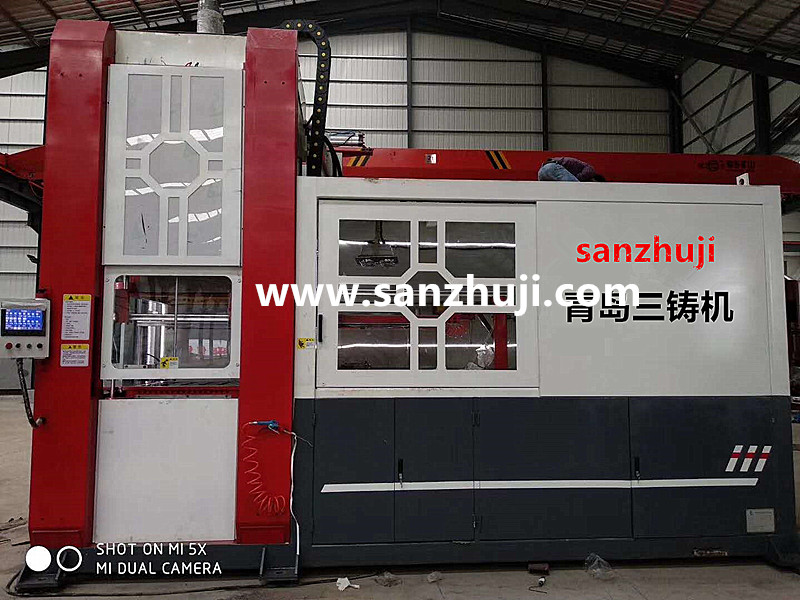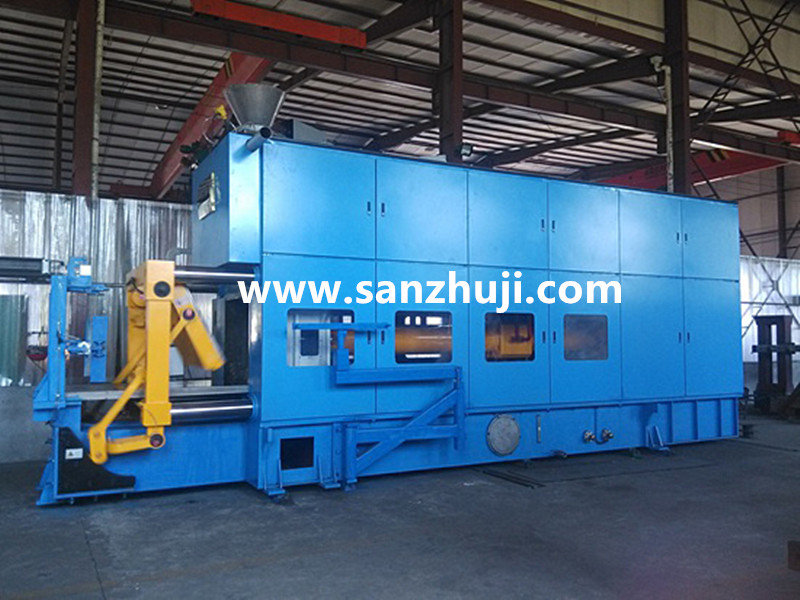6. Ploughing seams and expanding sand plastering often appear at the parting surface of the casting, which are vertical and perpendicular to the surface of the casting, and the thickness of the sheet-like metal protrusions is uneven. The outer covering is partially enlarged, forming irregular metallic protrusions.
6.1 Reasons:
Insufficient or uneven firmness, insufficient surface sand strength, or too high moisture content of molding sand, too large liquid metal indenter, and too fast pouring speed
6.2 Prevention method:
Improve the compactness of the mold, avoid local loosening, adjust the sand mixing process, control the moisture, increase the strength of the molding sand, reduce the pressure head of the liquid metal, and reduce the pouring speed
7. The lifting box casting has a large area of ??the hatching at the parting surface, which changes the external dimensions of the casting mold. The picking box is too large, causing the hot metal to overflow from the parting surface, and in serious cases, it will cause insufficient pouring defects.
7.1 Reasons:
7.11 The sand box is not fastened, the quality of the weight is not enough or the weight is removed too early
7.12 The pouring is too fast and the impact force is too large
7.13 Template wing curvature.
7.2 Prevention method:
7.21 Increase the weight of the weighted iron, remove the weighted iron after the special molten iron solidifies
7.22 Lower the ladle position and reduce the pouring speed
7.23 Correction Template
8. On the surface of the sand-dropped casting, the lumpy metal hazard appears on the surface, and its shape is very similar to that of the dropped sand. In other parts of the casting, blisters or defects often appear.
8.1 Causes:
8.11 There are deep and small grooves on the pattern, which is the same as the structural feature or the draft angle is small, and the sand mold will be damaged or cracked when it is horizontal.
8.12 Uneven compactness and insufficient local strength of the mold
8.13 When the box is closed and the mold is transported, the sand block of the mold is accidentally dropped
8.2 Prevention method:
8.21 The draft angle of the pattern should be appropriate and the surface should be smooth
8.22 The mold has high compactness and uniformity
8.23 During the closing and handling process, be careful
9. A part of the wrong type (wrong box) casting is staggered at the joint of the parting surface, and the relative displacement occurs, so that the shape of the casting does not conform to the drawing.
9.1 Causes:
9.11 The pattern is poorly made, the upper and lower molds are not aligned or the pattern is deformed
9.12 The positioning of the sand box or template is not accurate, or the positioning pin is loose
9.13 Wear of parts on the extrusion molding machine, such as the wear of the lower lining plate of the positive pressure plate and the bearing of the reverse pressure plate, etc.
9.14 The casing used for pouring is deformed, and care is not taken when handling and enclosing the casing, causing displacement of the upper and lower casting molds
9.2 Prevention methods
9.21 Increase the air pressure of the molding machine to improve the compactness of the sand mold
9.22 Accurately buckle the stabilizing pin after closing the box
9.23 Replacement of wearing parts of extrusion molding machine
9.24 Use the manipulator to press the box
10. The hole wall of the stomata is smooth and bright, and the shape is round, pear-shaped and needle-shaped. The size of the hole is large or small, and it occurs on the surface or inside of the casting. The pores inside the casting can only be found after breaking or machining.
10.1 Reasons:
10.11 The small charge is wet, severely rusted or oily, which makes the molten iron contain too much gas and is seriously oxidized
10.12 The tap hole, tap slot, furnace lining and ladle lining are not dry
10.13 The pouring temperature is low, so that the gas has no time to float and escape
10.14 The aluminum content in the charge is high, which is easy to cause hydrogen holes
10.15 The sand mold has poor air permeability, high moisture content of the molding sand, and more coal powder or organic matter, which makes a large amount of gas generated during pouring and is not easy to discharge.
10.2 Prevention method:
10.21 The charge should be properly managed and the surface should be clean;
10.22 Hearth, forehearth, tap hole, tap trough and ladle must be dried;
10.23 Increase the pouring temperature;
10.24 Do not use scrap with excessive aluminum content
10.25 Appropriately reduce the moisture of the molding sand, control the amount of pulverized coal added, and pierce the air holes, etc.
Qingdao Sanzhuji Equipment Manufacturing Co., Ltd. specializes in the production of Green Sand Molding Line,Self-hardening sand molding line,foundry machines,Sand molding machine,Sand casting equipment,sand mixer,GS high efficiency rotary mixer,Resin sand mixer,no-bake resin sand mixer,Jolt squeeze molding machine/Jolt-squeezing moulding machines,Multi- Piston Moulding Machine/Hydraulic multi-piston moulding machine,sand casting molding machine,sand reclamation equipment,foundry molding machine,flaskless moulding machine,shot blasting machine,dust collector,according to the amount of old sand recovered Carry out plan customization, and provide sand reclamation equipment installation, commissioning, and training. Welcome guests to visit the factory.








